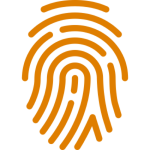Sticky solutions to your everyday business challenges
Question: I manage a finance team for a company in Indianapolis that just completed a merger. We’ve grown from 12 to 18, and I want to help the team get to know each other and put away our differences as quickly as possible. Can you recommend one or two simple exercises to help me get the ball rolling?
Answer: Out of 1,000 corporate and private equity respondents in Deloitte’s 2019 mergers and acquisitions trends survey, 79% expect the number of deals they close in the next 12 months to increase, up from 70% in 2018. Despite the high number of deals, the path toward successful integration is risky. The most important factor cited in achieving success is integration. That success depends largely on managers like you who understand that the sooner you move away from “us versus them” thinking, the better your odds. Here are two exercises that we recommend to get you started.
A simple ice breaker involves asking participants to create a human chain based on their similarities. One team member stands up and shares details about themselves, such as their birth month, favorite color, last movie seen or college major. Whenever they say something that another member has in common with them, that member stands up and links arms with them until all group members have linked arms.
Commonalities and Uniquities
 Form three groups of six people and give each group a flip chart and marker. The first part of the activity is Commonalities, where each small group compiles a list of the things they have in common. To make the list, it must apply to everyone in the small group. Ask them to avoid writing things that people can see (e.g. “everyone has hair,” or “we are all wearing clothes”). Try to get them to dig deeper. After about 5 minutes, have a spokesperson from each small group share their list with the whole team. As each list is read, have them circle commonalities that are shared among all three groups.
Form three groups of six people and give each group a flip chart and marker. The first part of the activity is Commonalities, where each small group compiles a list of the things they have in common. To make the list, it must apply to everyone in the small group. Ask them to avoid writing things that people can see (e.g. “everyone has hair,” or “we are all wearing clothes”). Try to get them to dig deeper. After about 5 minutes, have a spokesperson from each small group share their list with the whole team. As each list is read, have them circle commonalities that are shared among all three groups.
 Next, ask half of each small group to rotate to another group for Uniquities. On another flip chart page, ask each small group to record uniquities, meaning that each item applies to only one person in the group. Again, you want to go beyond the superficial, avoiding those things that people can readily see. The group tries to find at least two uniquities for each person. After 5-7 minutes, ask one person to read the uniquities one by one, having members of the other small groups try to guess who it was.
Next, ask half of each small group to rotate to another group for Uniquities. On another flip chart page, ask each small group to record uniquities, meaning that each item applies to only one person in the group. Again, you want to go beyond the superficial, avoiding those things that people can readily see. The group tries to find at least two uniquities for each person. After 5-7 minutes, ask one person to read the uniquities one by one, having members of the other small groups try to guess who it was.
This two-part activity promotes unity, by getting team members to recognize that they have even more in common with others than they first might realize. The awareness of their own unique characteristics is also beneficial in that people can feel empowered to offer the group something unique.


